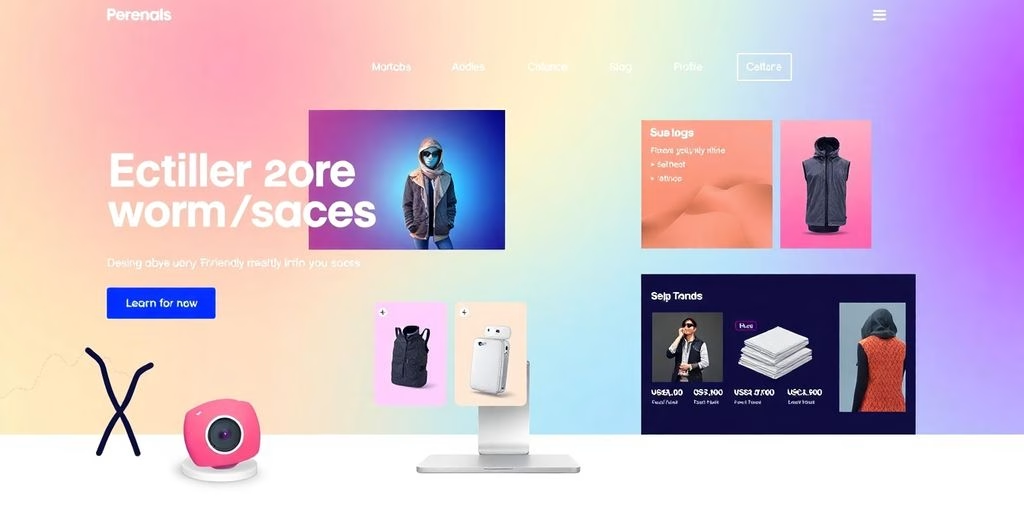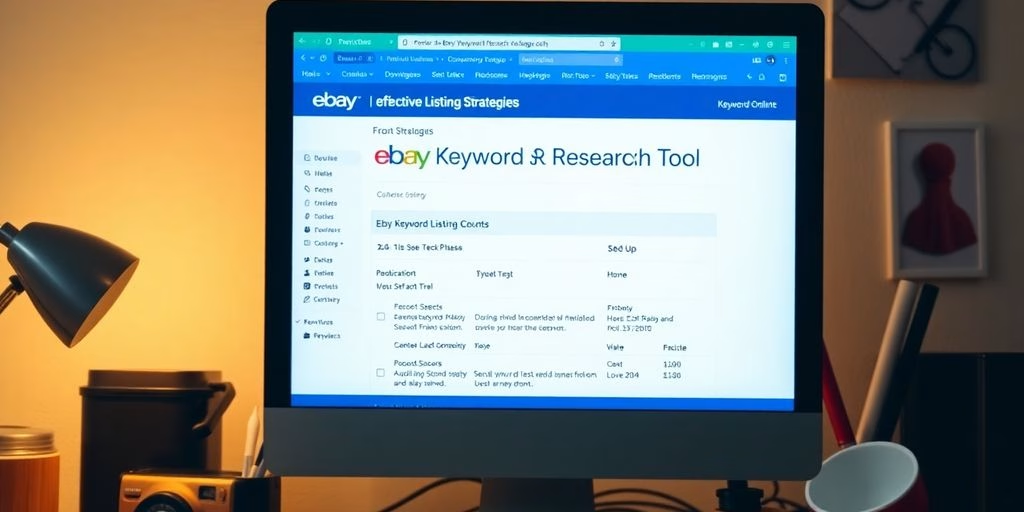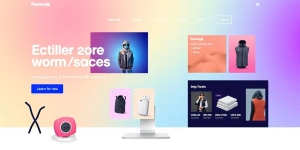Dalam artikel ini, kita akan mengeksplorasi prinsip-prinsip desain UI yang penting yang harus diketahui oleh setiap desainer. Prinsip-prinsip ini akan membantu Anda membuat antarmuka yang menarik dan ramah pengguna yang meningkatkan pengalaman pengguna secara keseluruhan. Mulai dari memahami pentingnya hirarki visual hingga mendesain untuk aksesibilitas, kita akan membahas berbagai topik. Jadi, mari selami dan temukan prinsip-prinsip utama yang akan meningkatkan keterampilan desain UI Anda.
Daftar Isi
BeralihHal-hal Penting yang Dapat Dipetik
- Memahami pentingnya hierarki visual
- Menciptakan hierarki visual yang jelas dan efektif
- Menggunakan kontras untuk memandu perhatian pengguna
- Merangkul minimalis dalam desain UI
- Merampingkan antarmuka pengguna untuk kegunaan yang lebih baik
Prinsip Desain UI: Kekuatan Hierarki Visual

Memahami Pentingnya Hirarki Visual
Menetapkan hierarki visual untuk memandu pengguna melalui antarmuka. Elemen-elemen penting harus menonjol, memandu perhatian pengguna dan membantu mereka menavigasi dengan lancar.
Kesederhanaan: Lebih sedikit lebih baik dalam desain UI. Hindari kekacauan dan kerumitan yang tidak perlu, pilihlah desain yang bersih dan sederhana yang memprioritaskan kebutuhan pengguna.
Umpan balik: Berikan umpan balik instan kepada pengguna atas tindakan mereka. Baik itu berupa penekanan tombol atau pengiriman formulir, umpan balik membantu pengguna memahami bahwa tindakan mereka terdaftar, menciptakan pengalaman yang lebih responsif dan menarik.
Alat Bantu: Desain UI melibatkan pemilihan warna, tipografi, dan tata letak yang cermat. Gunakan alat-alat ini secara strategis untuk membuat antarmuka yang menarik secara visual dan ramah pengguna.
Ingat, dalam dunia desain UI, hirarki visual adalah cahaya penuntun yang menuntun pengguna ke pengalaman yang mulus dan menyenangkan.
Menciptakan Hirarki Visual yang Jelas dan Efektif
Menetapkan hierarki visual untuk memandu pengguna melalui antarmuka. Elemen-elemen penting harus menonjol, memandu perhatian pengguna dan membantu mereka menavigasi dengan lancar. Lebih sedikit lebih baik dalam desain UI. Hindari kekacauan dan kerumitan yang tidak perlu, pilihlah desain yang bersih dan sederhana yang memprioritaskan kebutuhan pengguna.
Berikan umpan balik instan kepada pengguna atas tindakan mereka. Baik itu berupa penekanan tombol atau pengiriman formulir, umpan balik membantu pengguna memahami bahwa tindakan mereka terdaftar, menciptakan pengalaman yang lebih responsif dan menarik. Kejelasan dan konsistensi adalah kunci dalam desain UI. Elemen-elemen seperti tombol, ikon, dan font harus mempertahankan gaya yang seragam di seluruh antarmuka, sehingga pengguna dapat dengan mudah memprediksi bagaimana elemen-elemen tersebut akan berperilaku.
Menggunakan Kontras untuk Memandu Perhatian Pengguna
Apabila mendesain antarmuka pengguna, kontras sangat penting untuk menciptakan tampilan yang menarik secara visual dan efektif. Menggunakan warna yang kontras dapat membantu membuat informasi pada layar lebih mudah dibaca dan terlihat oleh pengguna. Selain itu, Anda juga bisa menggunakan kontras untuk menarik perhatian ke elemen penting seperti tombol ajakan bertindak atau tautan. Kontras tidak hanya terbatas pada warna saja - Anda juga bisa menciptakannya melalui penggunaan bentuk dan ukuran yang berbeda.
Menerapkan kontras dalam desain UI Anda dapat memiliki beberapa manfaat:
- Peningkatan Keterbacaan: Warna yang kontras membuat teks dan konten lainnya menonjol, sehingga lebih mudah dibaca dan dipahami oleh pengguna.
- Hirarki Visual: Dengan menggunakan kontras, Anda bisa memandu perhatian pengguna ke elemen terpenting pada layar, membantu mereka menavigasi dan berinteraksi dengan antarmuka.
- Pengalaman Pengguna yang Ditingkatkan: Kontras dapat menciptakan pengalaman pengguna yang lebih menarik dan berkesan, membuat antarmuka Anda menarik secara visual dan menyenangkan untuk digunakan.
Ingat, ketika menggunakan kontras, penting untuk mencapai keseimbangan dan memastikan bahwa desain tetap kohesif dan harmonis secara visual. Jadi, silakan bermain dengan warna, bentuk, dan ukuran untuk menciptakan UI yang menarik perhatian dan menyenangkan pengguna!
Prinsip Desain UI: Seni Kesederhanaan

Merangkul Minimalisme dalam Desain UI
Dalam hal desain UI, terkadang lebih sedikit lebih baik. Merangkul minimalis dapat menghasilkan antarmuka yang lebih bersih dan lebih ramah pengguna. Dengan menghilangkan kekacauan dan kerumitan yang tidak perlu, Anda bisa memprioritaskan kebutuhan pengguna dan menciptakan pengalaman yang mulus. Berikut adalah beberapa prinsip utama yang perlu diingat:
- Kesederhanaan: Sederhanakan desain Anda dengan memfokuskan pada fungsi utama yang diinginkan pengguna. Desain yang ramping dan intuitif memungkinkan pengguna untuk dengan mudah menavigasi dan memahami fungsionalitas tanpa merasa terbebani.
- Ruang Putih: Memasukkan ruang putih untuk membantu elemen menonjol dan memudahkan pengguna mengonsumsi informasi.
- Tipografi yang Konsisten: Pilihlah satu jenis huruf yang jelas dan mudah dibaca yang selaras dengan merek Anda. Tipografi yang konsisten meningkatkan keterbacaan dan mempertahankan identitas visual yang kohesif.
- Sistem Desain: Menerapkan sistem desain untuk memberikan kontrol yang dapat diprediksi dan rambu-rambu yang sudah dikenal. Hal ini membantu pengguna mengikuti antarmuka dan memahami cara berinteraksi dengannya.
Ingatlah, pendekatan minimalis dapat menciptakan desain yang menarik secara visual dan berpusat pada pengguna, yang meningkatkan pengalaman pengguna secara keseluruhan.
Merampingkan Antarmuka Pengguna untuk Kegunaan yang Lebih Baik
Apabila menyangkut antarmuka pengguna, kesederhanaan adalah kuncinya. Merangkul minimalis dalam desain UI bisa sangat meningkatkan kegunaan dan meningkatkan pengalaman pengguna secara keseluruhan. Dengan merampingkan antarmuka dan menghilangkan kekacauan yang tidak perlu, pengguna dapat dengan mudah menavigasi dan memahami fungsionalitas tanpa merasa kewalahan.
Pendekatan minimalis berfokus pada menciptakan jalur intuitif bagi pengguna untuk mencapai tujuan mereka dengan upaya minimum. Navigasi yang efisien meningkatkan kegunaan, mengurangi frustrasi pengguna, dan pada akhirnya menghasilkan pengalaman pengguna yang lebih menyenangkan.
Prinsip-prinsip Desain UI: Peran Konsistensi

Mempertahankan Pola Desain yang Konsisten
Konsistensi adalah kunci dalam hal pola desain. Antarmuka yang konsisten menumbuhkan keakraban dan kemudahan penggunaan. Konsistensi mencakup skema warna, tipografi, dan penempatan elemen-elemen umum. Mempertahankan konsistensi di seluruh platform dicontohkan oleh Desain Material Google.
Sistem desain ini memastikan tampilan dan nuansa yang terpadu di seluruh perangkat Android, aplikasi web, dan platform lainnya. Desain Responsif juga sangat penting di dunia saat ini dengan berbagai perangkat dan ukuran layar. UI Anda harus beradaptasi dengan mulus ke berbagai ukuran layar, resolusi, dan orientasi.
Menggunakan Tipografi dan Skema Warna yang Konsisten
Konsistensi adalah kunci dalam hal desain UI. Dengan menggunakan palet warna, jenis huruf, spasi, ikonografi, dan lainnya yang konsisten di seluruh desain Anda, Anda bisa membuat antarmuka yang kohesif dan ramah pengguna. Memilih warna yang tepat akan membentuk fondasi yang kuat untuk desain UI Anda. Dalam proses ini, Anda harus memilih warna primer, sekunder, dan warna aksen. Warna-warna tersebut bisa digunakan untuk menciptakan kontras dan menarik perhatian ke elemen penting, seperti tombol ajakan bertindak atau tautan. Kontras tidak hanya terbatas pada warna saja - Anda juga bisa menciptakannya melalui penggunaan bentuk dan ukuran yang berbeda.
Untuk memastikan tampilan yang halus dan profesional, tipografi memainkan peran penting. Tipografi yang buruk dapat membuat tampilan antarmuka Anda terlihat berantakan dan sulit dimengerti, sementara tipografi yang tepat dapat membuatnya lebih halus dan profesional. Tetaplah menggunakan satu jenis huruf dan pilihlah yang jelas, mudah dibaca, dan sesuai dengan merek Anda.
Secara ringkas, berikut ini adalah beberapa poin penting yang perlu diingat:
- Gunakan palet warna, jenis huruf, spasi, dan ikonografi yang konsisten di seluruh desain Anda.
- Pilih warna primer, sekunder, dan aksen untuk menciptakan kontras dan menarik perhatian ke berbagai elemen penting.
- Gunakan bentuk dan ukuran yang berbeda untuk menciptakan kontras visual.
- Pilihlah satu jenis huruf yang jelas dan mudah dibaca yang sesuai dengan merek Anda.
Prinsip-prinsip Desain UI: Pentingnya Umpan Balik Pengguna

Memberikan Umpan Balik yang Jelas dan Tepat Waktu
Penting untuk memberi tahu pengguna Anda bahwa tindakan yang mereka lakukan telah selesai; jika ada yang salah, mereka juga harus diberi tahu. Jangan biarkan mereka menebak-nebak apakah tindakan yang mereka lakukan berhasil atau tidak! Tindakan yang sering dilakukan dapat diberikan pengakuan sederhana, dan tindakan yang penting atau langka memerlukan umpan balik yang lebih rumit. Umpan balik instan meyakinkan pengguna.
Sebagai contoh, ketika pengguna mengklik tambah ke keranjang, ikon tanda centang, atau 'item ditambahkan ke keranjang' dapat ditampilkan, dan pengguna tahu bahwa tindakan tersebut berhasil.
Ketika orang-orang berbagi pemikiran mereka tentang apa yang dilakukan oleh sebuah alat digital, hal ini membantu para desainer menciptakan produk, mengikuti proses pemikiran desain yang sesuai dengan harapan pengguna dan memecahkan masalah mereka. Pastikan agensi desain UX dan UI memberikan pembaruan yang akurat dan real-time tentang tindakan, unduhan, dan proses. Gunakan bilah kemajuan, tanda pemuatan, atau pesan untuk memberi tahu pengguna apa yang sedang terjadi. Hal ini akan membuat pengguna tetap berada dalam lingkaran dan mengurangi kebingungan.
Mencoba menyenangkan semua orang dapat menyebabkan desain yang tidak efektif. Sebaliknya, fokuslah pada audiens inti Anda dan desainlah dengan mempertimbangkan kebutuhan mereka. Pertimbangkan aksesibilitas dan inklusivitas dalam pilihan desain Anda untuk memastikan bahwa semua pengguna dapat dengan mudah menavigasi dan berinteraksi dengan produk Anda.
Menggunakan Interaksi Mikro untuk Meningkatkan Pengalaman Pengguna
Interaksi mikro adalah animasi kecil dan halus atau mekanisme umpan balik yang dapat memberikan dampak besar pada pengalaman pengguna. Interaksi mikro memberikan konfirmasi langsung kepada pengguna atas tindakan mereka, mengurangi rasa frustrasi pengguna dan mendorong keterlibatan. Entah itu animasi halus saat mengirim pesan atau suara notifikasi, interaksi mikro membuat antarmuka pengguna lebih responsif dan ramah pengguna. Pengujian kegunaan secara teratur sangat penting untuk mengumpulkan umpan balik tentang kegunaan dan efektivitas interaksi mikro. Dengan menerapkan interaksi mikro secara efektif, desainer dapat menciptakan pengalaman pengguna yang lebih intuitif dan menyenangkan.
Prinsip-prinsip Desain UI: Desain Emosional

Menciptakan Hubungan Emosional dengan Pengguna
Jika menyangkut Desain UImenciptakan hubungan emosional dengan pengguna adalah kuncinya. Ini bukan hanya tentang membuat antarmuka yang menarik secara visual, tetapi juga tentang membangkitkan emosi yang beresonansi dengan pengguna. Dengan memahami psikologi di balik emosi pengguna, desainer dapat menciptakan antarmuka yang menimbulkan perasaan positif dan meningkatkan pengalaman pengguna secara keseluruhan.
Jadi, bagaimana Anda bisa menciptakan hubungan emosional itu? Berikut adalah beberapa strategi:
- Gunakan cerita: Memasukkan elemen cerita ke dalam desain Anda untuk melibatkan pengguna pada tingkat yang lebih dalam. Dengan menceritakan kisah yang menarik melalui antarmuka Anda, Anda dapat membangkitkan emosi dan menciptakan pengalaman yang tak terlupakan.
- Memanfaatkan psikologi warna: Warna memiliki kekuatan untuk membangkitkan emosi tertentu. Gunakan psikologi warna untuk keuntungan Anda dengan memilih warna yang selaras dengan emosi yang ingin Anda timbulkan pada pengguna Anda.
- Tambahkan kejutan yang menyenangkan: Kejutkan dan buat pengguna Anda senang dengan interaksi atau animasi yang tidak terduga. Momen-momen kecil yang menyenangkan ini dapat menciptakan respons emosional yang positif dan membuat antarmuka lebih mudah diingat.
Ingat, menciptakan hubungan emosional dengan pengguna bukan hanya tentang estetika. Ini adalah tentang memahami dampak emosi pada pengalaman pengguna dan mendesain antarmuka yang beresonansi dengan pengguna pada tingkat yang lebih dalam.
Menggunakan Elemen Visual untuk Membangkitkan Emosi
Elemen visual memainkan peran penting dalam desain UI, karena memiliki kekuatan untuk membangkitkan emosi dan menciptakan pengalaman pengguna yang berkesan. Salah satu aspek kunci dari penceritaan visual dalam desain UI/UX adalah penggunaan warna dan tipografi. Warna dapat membangkitkan emosi tertentu dan mengatur suasana hati antarmuka secara keseluruhan, sementara tipografi dapat menyampaikan kepribadian dan meningkatkan estetika visual. Dengan memilih warna dan tipografi yang tepat secara hati-hati, desainer dapat menciptakan desain yang beresonansi dengan pengguna dan memunculkan respons emosional yang diinginkan.
Selain warna dan tipografi, ilustrasi yang sangat detail juga berkontribusi pada dampak emosional dari sebuah desain. Visual yang rumit ini lebih dari sekadar dekorasi dan menambahkan lapisan kecanggihan pada keseluruhan desain. Mereka memikat pengguna dan membuat antarmuka menarik secara visual. Dari deskripsi produk hingga elemen naratif, ilustrasi yang mendetail dapat meningkatkan aspek penceritaan desain UI dan menciptakan pengalaman pengguna yang lebih menarik.
Untuk menciptakan desain yang menarik secara visual, penting untuk memprioritaskan tata letak yang bersih dan rapi. Desain minimalis dengan ruang kosong yang cukup dan tipografi yang terorganisir tidak hanya meningkatkan estetika visual, tetapi juga meningkatkan kegunaan. Pengguna menghargai kesederhanaan dan kemudahan navigasi, dan tata letak yang bersih memberikan antarmuka pengguna yang jelas dan terfokus.
Singkatnya, elemen visual seperti warna, tipografi, dan ilustrasi memainkan peran penting dalam membangkitkan emosi dan menciptakan pengalaman pengguna yang berkesan. Dengan memilih dan menggabungkan elemen-elemen ini secara hati-hati, desainer dapat menciptakan desain yang beresonansi dengan pengguna dan meninggalkan kesan yang abadi.
Prinsip Desain UI: Peran Aksesibilitas

Merancang untuk Semua Pengguna
Merancang untuk semua pengguna adalah aspek penting dalam menciptakan UI yang sukses. Meskipun mungkin tergoda untuk mencoba dan menyenangkan semua orang, hal ini sering kali menghasilkan desain yang kurang efektif. Sebaliknya, penting untuk fokus pada audiens inti Anda dan mendesain untuk kebutuhan, preferensi, dan perilaku spesifik mereka. Dengan mengambil pendekatan eksklusif dan bertarget, Anda dapat menciptakan pengalaman pengguna yang lebih menarik dan dipersonalisasi untuk basis pengguna utama Anda.
Untuk memprioritaskan aksesibilitas, gabungkan fitur-fitur seperti teks alternatif untuk gambar, kontras warna yang tepat, dan navigasi keyboard. Hal ini memastikan bahwa antarmuka Anda dapat diakses oleh pengguna dengan kemampuan yang beragam dan mematuhi persyaratan hukum. Memperluas basis pengguna Anda tidak hanya mendorong inklusivitas tetapi juga membuka peluang baru untuk produk Anda.
Ingat, umpan balik dari pengguna sangat berharga, tetapi tidak selalu menjadi kata akhir. Sebagai seorang desainer, penting untuk menyeimbangkan umpan balik pengguna dengan inovasi dan visi Anda sendiri. Bersedialah untuk mengambil risiko yang telah diperhitungkan dan perkenalkan pengguna dengan cara-cara baru dan lebih baik dalam berinteraksi dengan produk Anda.
Konsistensi adalah kunci dalam desain, tetapi sedikit variasi dapat memicu kegembiraan dan ketertarikan. Sambil mempertahankan pengalaman yang koheren, pertimbangkan untuk sesekali memasukkan animasi yang tidak terduga, tata letak konten yang unik, atau penceritaan yang bervariasi. Hal ini akan menambahkan sentuhan kegembiraan dan membuat pengguna tetap terlibat.
Saat mendesain untuk semua pengguna, penting untuk menguji desain Anda di berbagai perangkat untuk memastikan fleksibilitas dan daya tanggap. Selain itu, buatlah desain yang mudah dipelajari sehingga pengguna baru dapat dengan mudah membiasakan diri dengan produk Anda, sekaligus menyediakan akselerator bagi pengguna yang sudah berpengalaman untuk menyelesaikan tugas dengan cepat.
Merangkul pendekatan minimalis dalam desain UI juga sangat penting. Entah itu tampilan atau langkah-langkah yang diperlukan untuk menyelesaikan tugas, mengurangi kekacauan dan merampingkan antarmuka pengguna akan meningkatkan kegunaan. Dengan memprioritaskan informasi penting dan menghapus elemen yang tidak perlu, Anda menciptakan pengalaman yang bersih dan terfokus bagi pengguna Anda.
Memastikan Kepatuhan Aksesibilitas
Jadikan antarmuka Anda dapat diakses oleh pengguna dengan beragam kemampuan. Memasukkan fitur seperti teks alt untuk gambarkontras warna yang tepat, dan navigasi keyboard. Mengikuti pedoman antarmuka manusia yang aksesibel tidak hanya memastikan inklusivitas, tetapi juga mematuhi persyaratan hukum, dan memperluas basis pengguna Anda. Setiap elemen, baik gambar, teks, atau ikon, harus memiliki skala yang proporsional untuk memberikan aksesibilitas kepada semua pengguna dan memberikan pengalaman yang berdampak. Interaksi berbasis suara dapat memberikan aksesibilitas bagi pengguna dengan disabilitas.
Menggunakan jenis huruf dinamis memastikan skala huruf agar selalu dapat dibaca. Sangat penting untuk menguji desain Anda di berbagai perangkat untuk memverifikasi bahwa tidak ada masalah fleksibilitas. Buatlah desain yang mudah dipelajari sehingga pengguna baru dapat membiasakan diri dengan penggunaan produk Anda, tetapi juga menyertakan akselerator yang membantu pengguna yang sudah berpengalaman menyelesaikan tugas mereka dengan cepat.
Peran Aksesibilitas sangat penting dalam dunia digital saat ini. Aksesibilitas memastikan bahwa semua orang, terlepas dari kemampuannya, dapat mengakses dan menggunakan situs web, aplikasi, dan platform digital lainnya. Aksesibilitas bukan hanya tentang kepatuhan terhadap persyaratan hukum, tetapi juga tentang menciptakan pengalaman yang inklusif dan ramah pengguna bagi semua pengguna.
Di CWORKSkami memahami pentingnya aksesibilitas dan berusaha untuk membuat situs web dan layanan kami dapat diakses oleh semua orang. Hubungi kami sekarang melalui halaman halaman kontak untuk mendiskusikan kebutuhan bisnis Anda dan mencapai kesuksesan yang luar biasa bersama dengan CWORKS. Mari kita mulai!
Kesimpulan
Desain UI adalah bidang yang menarik yang menggabungkan kreativitas dan fungsionalitas untuk menciptakan antarmuka yang menarik secara visual dan ramah pengguna. Dengan memahami dan menerapkan prinsip-prinsip desain UI yang penting yang dibahas dalam artikel ini, Anda dapat meningkatkan keterampilan desain Anda dan menciptakan pengalaman pengguna yang luar biasa. Ingat, kontras adalah kuncinya, kesederhanaan sangat kuat, dan konsistensi adalah raja. Jadi, teruslah maju, terapkan prinsip-prinsip ini, dan rancanglah dengan tujuan dan bakat!
Pertanyaan Umum
Apa yang dimaksud dengan hierarki visual?
Hirarki visual adalah pengaturan dan prioritas elemen dalam desain untuk memandu perhatian pengguna dan menciptakan tata letak yang jelas dan efektif.
Bagaimana cara membuat hierarki visual yang jelas dan efektif?
Untuk menciptakan hierarki visual yang jelas dan efektif, Anda bisa menggunakan teknik seperti ukuran, warna, kontras, dan penempatan untuk membedakan dan menekankan elemen penting.
Apa peran kontras dalam hierarki visual?
Kontras memainkan peran penting dalam hierarki visual, karena membantu membedakan dan menyoroti berbagai elemen dengan menggunakan perbedaan warna, ukuran, atau bentuk.
Apa pentingnya kesederhanaan dalam desain UI?
Kesederhanaan dalam desain UI membantu menciptakan antarmuka yang bersih dan intuitif yang mudah dipahami dan dinavigasi oleh pengguna.
Bagaimana saya bisa merangkul minimalis dalam desain UI?
Untuk merangkul minimalis dalam desain UI, fokuslah untuk menghilangkan elemen yang tidak perlu, menyederhanakan elemen visual, dan memprioritaskan konten dan fungsionalitas.
Mengapa konsistensi penting dalam desain UI?
Konsistensi dalam desain UI membantu menciptakan pengalaman yang akrab dan dapat diprediksi bagi pengguna, mengurangi kebingungan dan meningkatkan kegunaan.









































































































